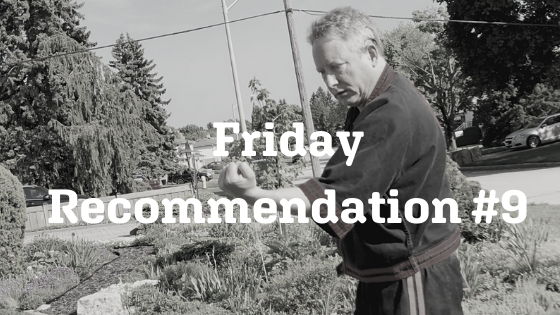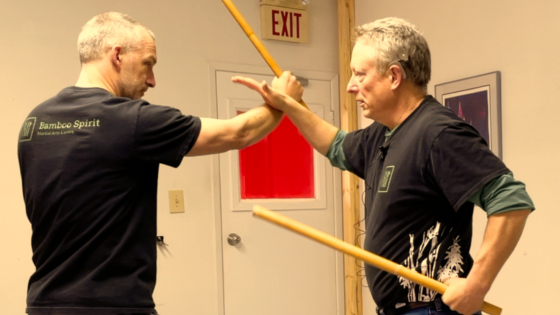The Different Cobra Kai Dojos
Estimated reading time: 6 minutes
My wife and I recently binge-watched Season 5 of “Cobra Kai” and immensely enjoyed it. I loved every bit of it! It looks like Season 6 is possible, although Netflix, as of this post, has not committed to it. Realistically, I think this show’s writers and creators can wring one more season out of this franchise. Otherwise, they run the risk of jumping the shark.
The storyline that stood out to me was Terry Silver’s state-of-the-art dojo compared to the backyard training offered by Miyagi-Do/Eagle Fang/Chozen. It seems to me that the writers recognized that, simplistically, there are high-end dojos and backyard/garage training groups.
Let’s assume for this post that all fees charged by Terry Silver’s Cobra Kai will be expensive: training fees, testing fees, merchandise fees, and special event fees. Why? The overhead for his “state-of-the-art” dojo will probably be sky-high. High expenses = high fees.
Let me paint a composite picture of two dojos I have encountered. First off, their business decisions were entirely appropriate for their particular situations.
- Spending $90,000 to renovate rental space before occupying the space.
- The monthly overhead is over $25,000. Yes, you read that right.
- The risk is relocating at the end of a lease and starting over again.
To meet the overhead, they may have to do the following:
- Charge high monthly training fees;
- Testing for a black belt often costs $500 or more;
- Host week-long summer camps to bring in extra revenue;
- Ditto for birthday parties;
- After-school programs are common to the high overhead dojos;
- In-house tournaments;
- Host tournaments;
- Sell merchandise;
To be clear, I have to give credit to those willing to take the risk and have the business and marketing acumen to keep their dojos afloat. Their risk tolerance is higher than mine. And yet, many dojos struggle from month to month.
There is a hamster wheel aspect to running a dojo like the above. If, for example, the monthly overhead is $25,000 and you charge $100 per student, you need 250 students. Of course, this is a simplistic scenario. If your student numbers drop below 250, you start bleeding. Imagine the stress of keeping the numbers above the break-even line. Geez!
Caveat: what I have described is much more prevalent in urban areas than rural areas.
The overhead will be much lower in a rural area. Take, for example, Port Hope versus any GTA (Greater Toronto Area) municipality. The overhead will be a lot cheaper in Port Hope.
The upside is that dojos can often be a platform to spread an owner’s brand. Indeed, I have seen some examples of this. As fans of Cobra Kai know, Terry Silver had a well-thought-out plan to take the Cobra Kai brand international, and it all started with his dojo.
On the other hand, some do not want to deal with the hamster wheel version of dojo ownership and are just happy to teach in a garage or a backyard. Their training and testing fees are often lower. Instructors are happy to focus on teaching and passing on their art. They don’t have to worry about summer camps, after-school programs or birthday parties.
Can you imagine Johnny Lawrence or Daniel LaRusso running an after-school program to keep the Miyagi Do or Eagle Fang dojos afloat? HA!
These are two very different business models, and both are valid. It just comes down to an instructor’s preference and comfort level. Terry Silver had his vision for Cobra Kai. On the other hand, Johnny Lawrence, Daniel LaRusso and Chozen chose a different route.
Me? I prefer the garage/private lesson version. As the pandemic recedes, I plan to do local monthly workshops so my students can train together and socialize! Returning to 2007, when I moved to Canada, I planned to teach Filipino Martial Arts at a local community centre. To be honest, Filipino Martial Arts/Modern Arnis was all I wanted to teach. I reasoned that I did not want to teach anything else if my heart was not in it. No doubt that cost me financially. While I came close, I never met the benchmark numbers I set to consider moving into my space.
After ten years, I moved from the community centre to a local karate dojo where I rented out three weekly class slots. To be honest, I had difficulty attracting new students. Again, I failed to meet the benchmark numbers. When the pandemic hit, I re-evaluated everything and moved entirely to private garage lessons.
I am happy as heck to have done that.
Teaching private lessons has been immensely rewarding and fun. My students have progressed much quicker through private lessons than in group classes.
To sum up, I never transitioned to being a full-time dojo owner for the following reasons:
- I only wanted to teach Filipino Martial Arts/Modern Arnis;
- I did not have the passion or desire to teach other martial arts. In other words, a martial art to pay the bills;
- FMAs/Modern Arnis is a niche market and does not have the branding that MMA, BJJ and other arts do. This translates into small numbers of students;
- I live in an area where commercial space is quite expensive, and
- Lastly, it took some time to realize that I did not want to be a full-time dojo owner.
Bottom line, I identify much more with the backyard dojo training offered by Chozen, Johnny Lawrence and Daniel LaRusso.
What about you? Let’s hear what you think!
Last Week’s Video
If you are not able to view this video, click here.
This drill emphasizes the umbrella and wing movements. Footwork is critical; otherwise, you’ll be crushed by an overhead attack. Depending on whether you employ the wing or umbrella moves, you must angle off to the side.
Side note: As I indicated in the video, I replaced the prior version of Flow Drill 16 with this version. Why? I found that the old version tended to degrade very quickly. Specifically, it would often deteriorate into a speed drill without footwork. Sloppiness was the rule rather than the exception. So, I ditched the original version for the 10-count drill in the above video. The speed is more deliberate and forces both to execute proper footwork.
This Week’s Inspiration
Wow! He’s unbelievably fit at 77 years of age. He exhibits phenomenal body control in his exercises. I do not doubt that he has been doing this for a long time.
All that said, what I’m saying here is don’t let your age get in the way of whether you exercise. “I’m too old to start.” No, no, no, no. Don’t do that! It’s never too late to start ANYTHING!
If you are not able to view this video, click here.
Additional Reading
- Two Themes of Cobra Kai – Season 4
- Digging Deep into Single Sinawali
- Strike First, Strike Hard, No Mercy
- Downsizing
- Toronto Area Machete Attack
Share this post:
- Click to share on Twitter (Opens in new window)
- Click to share on Facebook (Opens in new window)
- Click to share on LinkedIn (Opens in new window)
- Click to share on WhatsApp (Opens in new window)
- Click to share on Nextdoor (Opens in new window)
- Click to share on Pinterest (Opens in new window)
- Click to email a link to a friend (Opens in new window)
Brian Johns
Related Posts
3 Comments
Leave a Reply Cancel reply
Categories
- Arnis/Kali/Eskrima (113)
- Book Review (8)
- DVD Reviews (3)
- Guest Post (4)
- Inspiration (24)
- Martial Arts (99)
- My story (92)
- Safety (14)
- Tips & tricks (6)
- Uncategorized (3)
- YouTube Videos (8)






[…] Recently, my wife and I binge-watched Season 3 of Cobra Kai. We both loved it and can’t wait till Season 4! This hugely entertaining series appeals to those who grew up in the 1980s. It’s delightful to see that slogan again in Johnny Lawrence’s dojo. […]
[…] are so many themes to dig into. The shifting alliances, the numerous references to the 1980s, martial arts philosophies, loyalties, redemption, idealism vs. pragmatism, and flexibility vs. rigidity are themes that ran […]
[…] “go with the flow,” one can adopt a harder-edged version of this philosophy. Like the Cobra Kai! :-). What’s that well-known mantra? “Strike First, Strike Hard, No […]